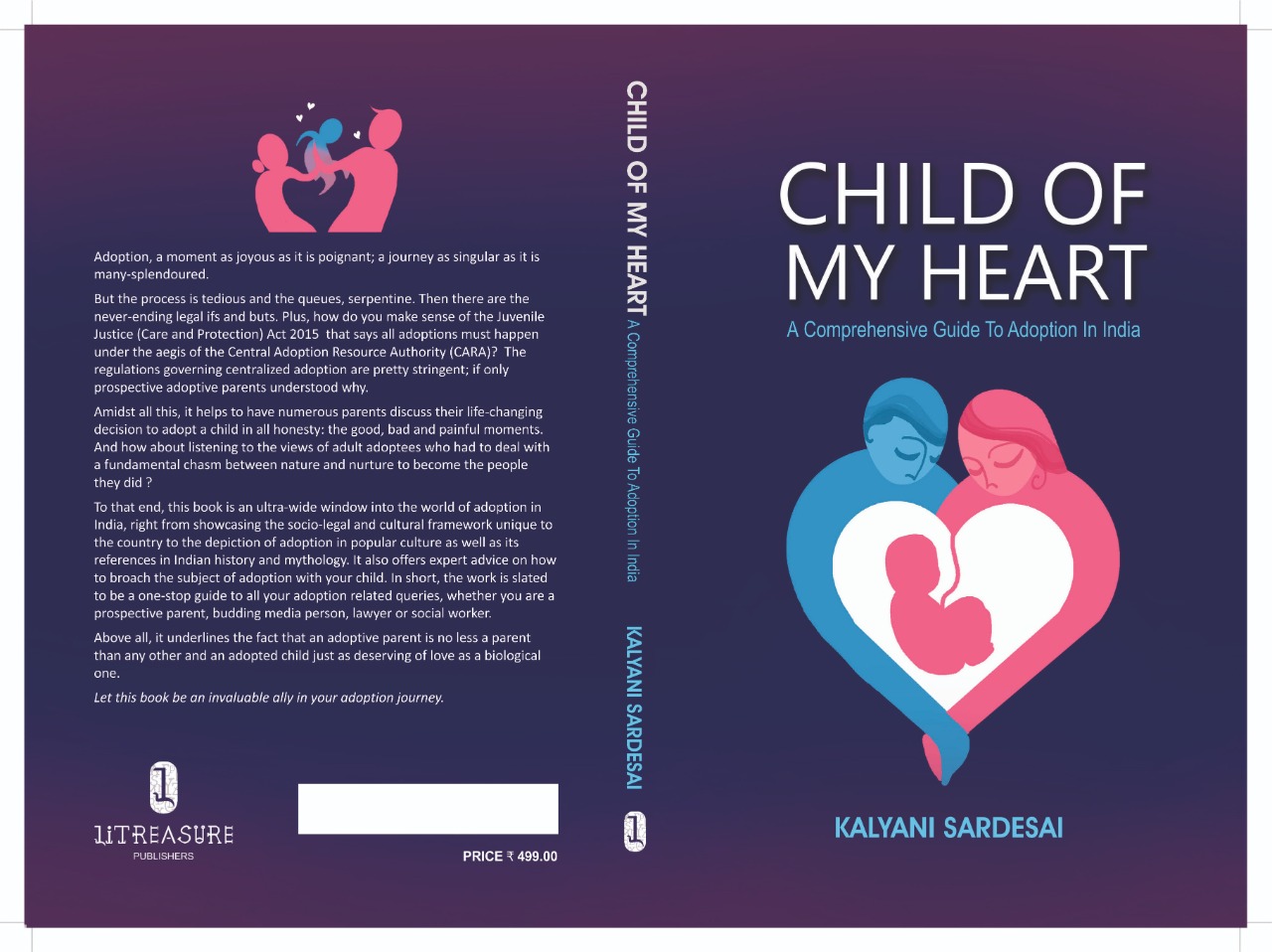
Child of My Heart: A Comprehensive Guide to Adoption in India
November happens to be National Adoption Month and November 9 is World Adoption Day

November happens to be National Adoption Month and November 9 is World Adoption Day.
The two occasions mainly focus on the need to adopt children and give them homes with love and caring.
A new book written by Pune-based journalist and adoptive parent Kalyani Sardesai hopes to do all that and more, whilst simultaneously offering a deeper insight into all that adoption is, isn’t and what it should be.
Published by Litreasure Publishers, Child of My Heart: A Comprehensive Guide to Adoption in India is slated to be a one-stop guide for all questions pertaining to adoption.
“Having been through the process under the current centralized system of adoption, there were a lot of questions I had along the way,” says Sardesai.
“Sure, there was information available online, the availability of adoption support groups as well as hand-holding from my mentoring child care institution, but as a reporter, I thought it would be a good idea to simplify and collate the relevant information in a book with a focus on Indian references. This is because while some aspects are universal to adoption, others are specific to us.”
Adoption in India currently happens only under the aegis of the Centralized Adoption Resource Authority, a statutory body of the Ministry of Women and Child Development under the Government of India. Established under the Juvenile Justice (Care and Protection of Children) Act, 2015 CARA is responsible for monitoring and regulating adoptions both within and outside India. This has both pros and cons, as the current system seems to have brought down the number of adoptions, whilst simultaneously bringing in objectivity and transparency to the process. “For parents, this has assorted repercussions. Hence, the book,” says Sardesai.
While the new system doesn’t require you to pay ‘donations’ to avail of a child, in fact you are not supposed to pay anything other than the INR 40,000 which are the CARA fees and INR 6,000 for a Home Study Report, it has done away with the human interface that used to exist earlier. “Earlier on, you could look at children from a particular childcare institution. But now, with the system being centralized and online, you may be mentored and counselled by a particular agency but the child could come from anywhere in India. This has both pros and cons for parents and children,” says Sardesai.
Contents of the book
From the paperwork and technicalities, to the rationale behind the centralized adoption process to the questions that are seemingly unique to adoptive homes, this book hopes to go the distance in bringing greater clarity to one’s understanding of the phenomenon of adoption. Also, keeping in mind that adoption is a lifelong process, that the journey of a family and child only begins at the end of a tedious and long-winded wait, Section I is a detailed section dedicated to the voices of adopted parents and adoptees, featuring in depth interviews with various individuals and parents.
Section II features writings of several activists and child care experts. These ought to help in helping you understand your child better at different stages of the parent-child journey. What makes it a valuable read is that this section deals with the sensitive subject of discussing adoption with the child in a matter of fact, non dramatic way.
Interestingly, Section III looks at adoption as depicted in popular Indian culture and folklore, as this definitely influences our understanding of the process and the outcome. From research papers with inputs from Vedic scholars and historians on the handling of adoption in ancient Indian mythology and history to a dekko at both how Bollywood and Hollywood have dealt with their adopted characters, it examines desi socio cultural nuances threadbare.
Section IV simplifies the socio legal cultural context against which adoption works in India and contains useful tips on the Who, What, Where, When, Why and How of Adoption starting from who may adopt, how they might go about it (depending on whether they are looking at domestic or international adoption, older or newborn kids or are open to adopting kids with special needs) along with a special underlying message: come what may, obey the law, even if the wait for child is seemingly unending.
Which brings us to a perplexing dichotomy: In a country with over 30 million homeless/abandoned children (as per UNICEF), just about 4 lakhs plus are institutionalized and even fewer are legally available for adoption. The book takes an objective look at the shortcomings of the system apart from examining a scary phenomenon: human trafficking for purposes of adoption.
It then goes to explore the disturbing reality called disruption of adoption (the return of the adopted child to the childcare institution) for various reasons
Apart from the above, the book goes beyond the purview of both Prospective Adoptive Parents (PAPS) and adoptees to examine Indian society and its myriad contradictions. “Our prejudices reveal as much about us as our strengths. To that extent, it hopes to be a resource book for budding social workers, lawyers and journalists and help them form an understanding of why things work the way they do,” says Sardesai.
Well-researched and comprehensive, Child of My Heart looks at all aspects of adoption: from the psychological and emotional to the socio-cultural and legal. This is a book that does not claim to have all the answers, even as it raises some timely and pressing questions. Most importantly, it drives home a fundamental points: Adoption is not charity.
The book releases on November 9, World Adoption Day and will soon be available on Amazon. Alternately, you could book your copy at chetan@litreasurebooks.com.

